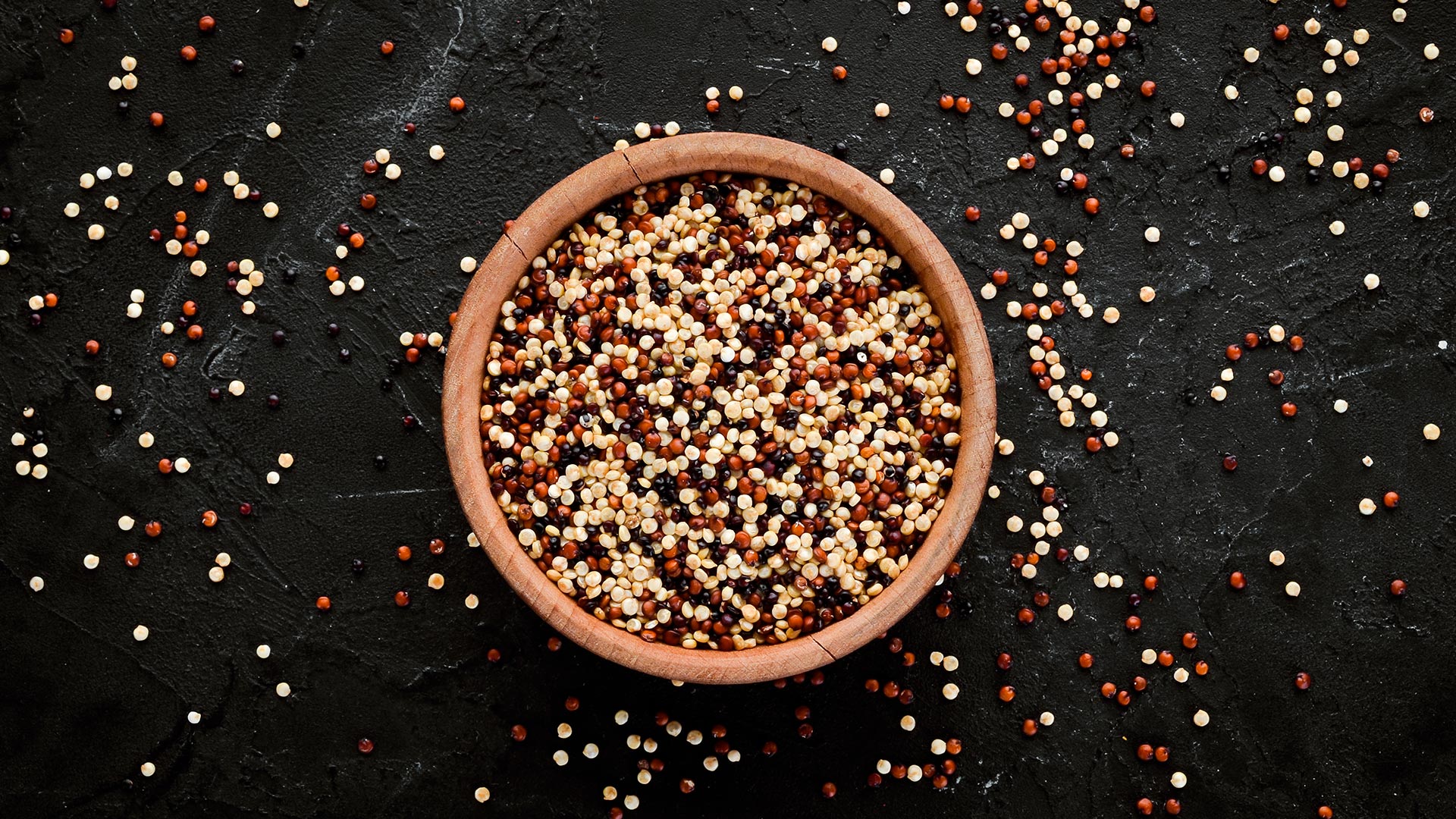Quinoa is a bush with edible seeds. The seeds are a variety of different colours including white, red, black and blue.
Its scientific name is Chenopodium quinoa and it is a pseudocereal. It occurs naturally in South America. It has been cultivated by the Andean population for three to four thousand years and has been a key element of the diet of those living in the region for centuries. Now, quinoa is recognised internationally both for its nutritional value and for the large variety of ways in which it can be used. The white, red and black seeds are those that are most frequently seen on sale in shops.
The health benefits of quinoa come from its unique combination of nutrients. It is a rich source of thiamine, vitamin E, riboflavin, vitamin B6, vitamin B12, folic acid and niacin.
Quinoa is rich in minerals such as iron, manganese, potassium, phosphorus, magnesium, zinc and copper and is high in protein (14%) and dietary fiber. It also has very low levels of saturated fat and cholesterol.
Finally, it has a low glycemic index (GI) which keeps blood sugar levels at normal levels, making it an ideal choice on menus for diabetics.
Indeed, the United Nations has classified it as a “golden food” and the Food and Agriculture Organization (FAO) has recognized it as a food of high nutritional value and impressive biodiversity.
ARTICLES ABOUT
MEDITERRANEAN DIET
What is it that makes quinoa so special?
- Quinoa contains high amounts of complete protein and therefore equips our organism with essential amino acids. The proteins in quinoa are comparable with those in pure protein foods such as fish and meat. This means that it an ideal daily alternative source of protein for those following a vegetarian diet.
- It has high levels of calcium and magnesium which help to maintain good bone health and reduce fatigue.
- Quinoa has a high antioxidant phytonutrient content. In fact, there is a greater concentration of two flavonoids, quercetin and campepherol, in quinoa than that fruits such as berries, which are the main flavonoid-rich foods.
- Anti-inflammatory properties: As well as all its other qualities, quinoa contains elements which have a strong anti-inflammatory action, helping to protect and maintain good health. Preliminary studies on animals indicate that eating quinoa on a daily basis reduces the risk of inflammation (including obesity). The small amounts of ω-3 fatty acids (α-linolenic acid) quinoa contains contribute to its anti-inflammatory action.
- It has a mild flavour and does not spoil the taste of dishes it is added to. It can easily be added to salads, soups and main dishes. It can also be eaten hot, cold or at room temperature.
- It is relatively easy to prepare and is cooked in much the same way as rice (1 part quinoa / 2 parts water)
Its nutritional profile is as follows:
A cup of cooked quinoa has 222 calories, 8 grams of protein, 39 grams of carbohydrates, 4 grams of fat and 5 grams of fiber.
Nutritional analysis of the recipe
- Low in saturated “bad” fats (as it contains less than 1.5g of sugar per 100g).
- Provides 10% of the recommended daily dietary fiber requirements
- Low in sugars (since it contains less than 5g of sugars per 100g)
